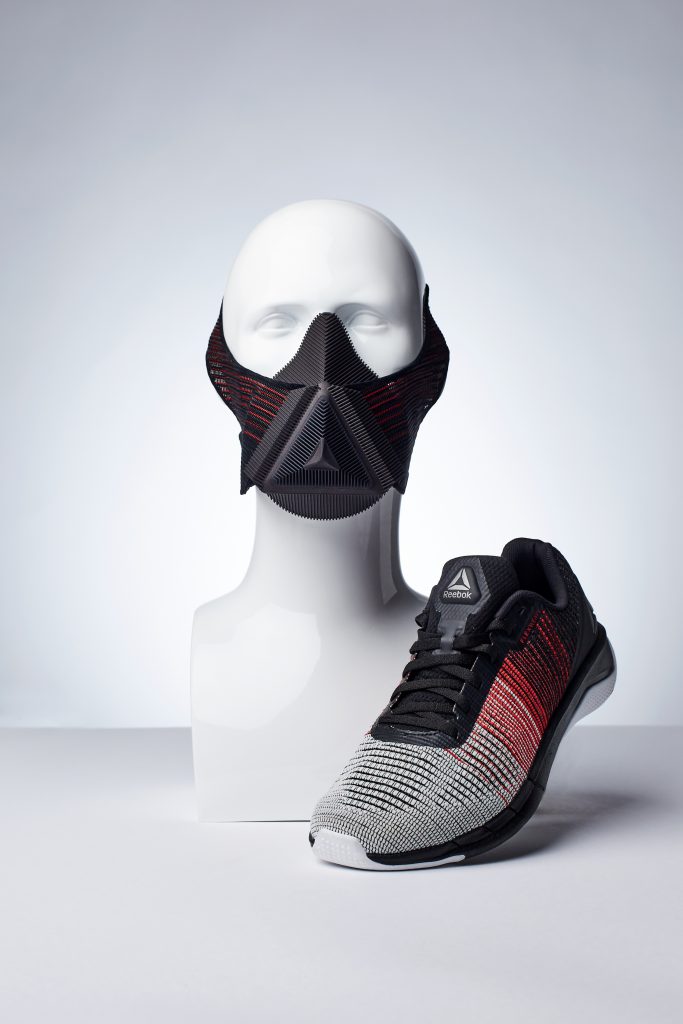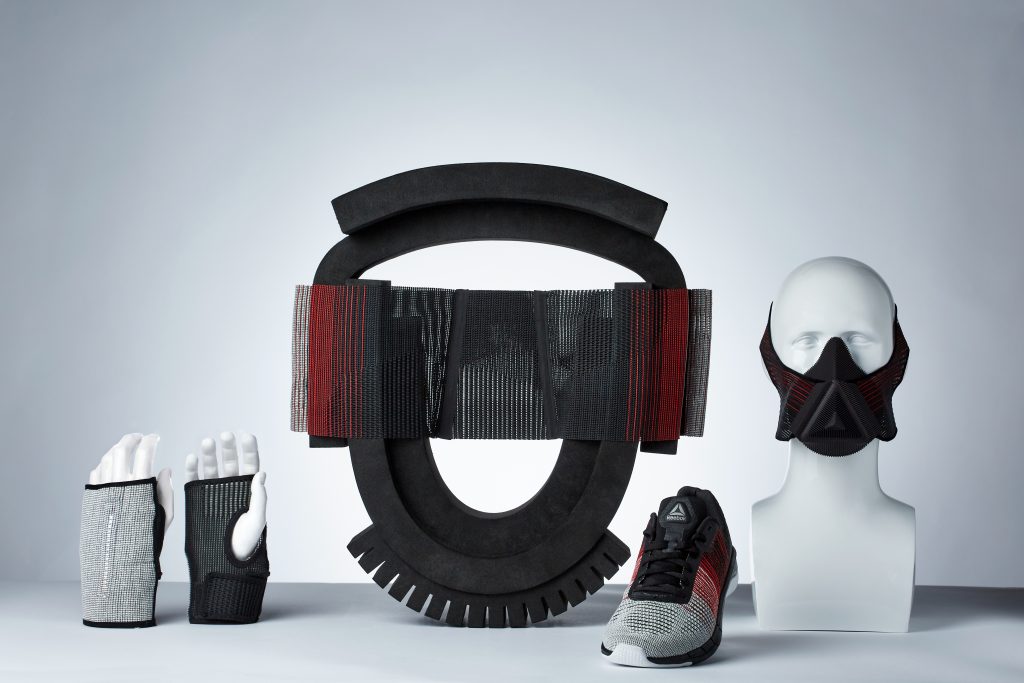Reebok, like parent company adidas, continues to explore the application of 3D printing to sportswear. The latest 3D printing project comes in the form of a collaboration with London’s Modla – 3D printing and design specialists.
I caught up with Modla co-founder Rich Goddard to learn more about the Reebok Innovation Collective and, “developing footwear and apparel that deliver the next generation of performance and expression”.
Led by Goddard’s co-founder and lead designer, Jon Fidler Modla has produced a bespoke 3D printed athlete’s training mask that uses the Flexweave material from Reebok. “The mask is our interpretation of an existing training mask, which is designed to restrict the level of oxygen taken in by the athlete when training,” explains Goddard.
“The aim is to give a similar effect to that of high altitude training, making the body work harder to increase overall fitness and performance.”
The futuristic looking mask joins a pair of cutting-edge running gloves from Joe Doucet x Partners and a collection of light-weight, active sitting chairs by Odd Matter.

3D printing gives fast turnaround
To create the prototypes, Modla initially used Ultimaker 2 3D printers for a fast turnaround, shortening the design cycle. Once Fidler and his team settled on a final design, the final 3D printing was undertaken by fellow London based business, Digits2Widgets and used their EOS SLS 3D printers.
Post-processing work to dye the masks was done by DyeMansion.
Goddard adds, “We also used a Form 2 to create masters that were used to create the molds for the silicone components. CAD files were created in Solidworks. Lasercutting and assembly was done at our space at Makerversity in London.”
For the creative and design process, Modla was asked by Reebok to come up with some ideas of products which integrate the new Flexweave material. Goddard says, “We felt this would fit the brand, so our lead designer, Jon Fidler, worked up some designs. Taking into consideration both form and function, the mask itself involves a valve system to restrict inflowing air. It has 3 different settings, which can be switched by rotating the front panel on the mask.”
The resulting mask is intended to be a functional piece, but at 3D Printing Industry HQ we can imagine any potential wearer wouldn’t look out of place at the next Techwear meet-up.

3D printing was not the only technology used to make the mask. “For the Flexweave, we spoke with the Reebok product team to understand the production methodologies used in trainer manufacturing for such a unique material, and integrated them into our overall process,” explains Goddard. “We used laser cutting to form the shape of the material, which is another digital process using our CAD file. The laser cutter cuts through the Flexweave in a matter of seconds and allows us to test the shapes created on the spot.”
“We then used heat bonding processes with TPU adhesive hot melt film – used by Reebok in traditional trainer manufacturing – to create the edging for the design.
The material itself is then fixed to the mask using a specially designed fixing mechanism to click into place, so there’s no glue required.”
So there you have it, if you’re looking to add a spot of resistance training to your lungs or just hang with your fellow urban ninjas, the Modla X Reebok 3D printed Athlete’s Mask might be what you’re looking for.
London is one of the early leaders in nominations for the 2018 3D Printing Industry Awards, do you agree? Make your choices now.
Subscribe to the 3D Printing Industry newsletter, follow us on Twitter, and like us on Facebook here.
Featured image shows the The Modla X Reebok 3D printed Athlete’s Mask.



